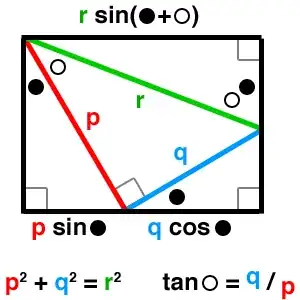Intuitive visualization:

The sine of $t$ is the $y$ coordinate of an initially horizontal unit vector as it rotates counterclockwise by $t$ radians about the origin.
The cosine of $t$ is the $y$ coordinate of an initially vertical unit vector at it rotates counterclockwise by $t$ radians about the origin.
Then $\sin t+\cos t$ is the $y$ coordinate about the shown sum of the horizontal and vertial unit vectors as the whole diagram rotates counterclockwise by $t$ radians about the origin.
But that is the same as rotating the dotted vector about the origin by $t$ radians. It has length $\sqrt 2$, and in its initial position it is already roated by $\pi/4$ radians. Thus, we can make the dotted vector by taking the sine, rotating it by an extra $\pi/4$ radians, and then scaling everything by $\sqrt 2$.
The generalization to $p\sin t+q\sin t$ should be clear.


